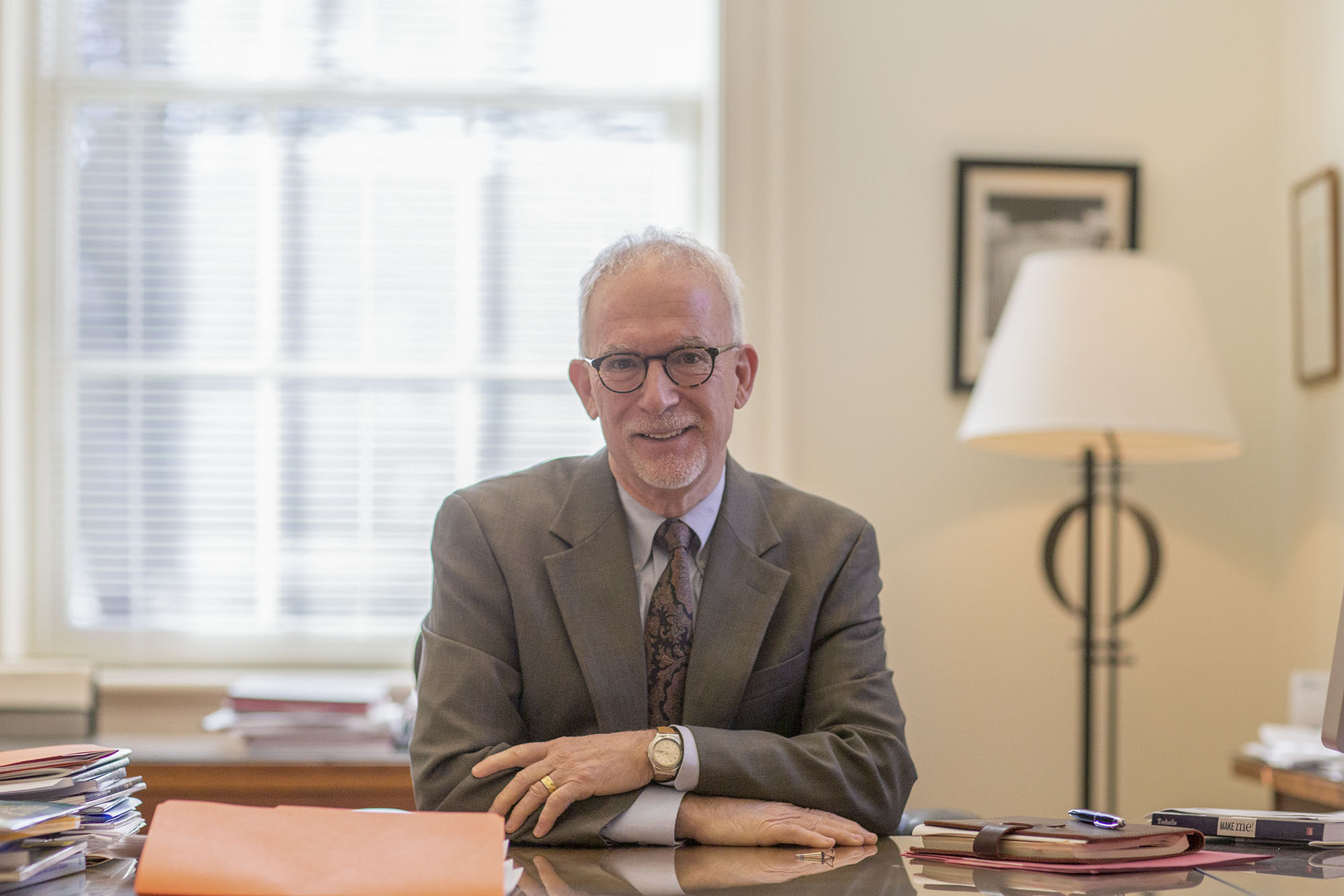In Washington, D.C., this week, congressional leaders are pushing to reach a compromise on a proposed $1.75 trillion domestic policy and climate budget deal. Included in the proposals are significant investments in childcare, universal pre-K and the early childhood workforce.
In a recent commentary published in Brookings, scholars at the University of Virginia School of Education and Human Development discussed what their research shows might be the impact of those investments. “The results are clear,” they write. “Enrollment [in pre-K programs] contributes to students’ learning and development the year in which they enroll, and they enter the following year performing significantly better than peers without those prior experiences.”
The research team includes Bob Pianta, dean and Batten Bicentennial Professor of Early Childhood Education, Jessica Whittaker, research associate professor, and Virginia Vitiello, assistant professor, along with co-author Arya Ansari, assistant professor at Ohio State University.
We sat down with Pianta to discuss the policy proposals and what the team’s research says about their potential success.
Q. What about the proposed plans for early childhood education stands out to you as the most effective?
A. Each of the proposals will have a significant benefit, but the one that stands out to me as most likely to make the biggest difference for children is the one focused on pre-K for 3- and 4-year-olds. This proposal essentially expands the country’s public education system to age 3. And if we get it right in terms of making sure these programs are using up-to-date curricula with teachers who are well-trained and supported, the opportunity to provide two consecutive years of high-quality early education is a game-changer. Think of this as doubling the dose of a beneficial nutrient in your diet.

Bob Pianta is dean of the UVA School of Education and Human Development and Batten Bicentennial Professor of Early Childhood Education. (Photo by Sanjay Suchak, University Communications)
The proposal to increase pay for childcare providers will also make a major difference for families. Income for these staff will go up and likely lead to more stable staffing in classrooms and lead to teachers’ ability to stay in the profession (and support their own families). With a more predictable workforce, childcare will be more available, and parents of young children can be employed.
It is hard to overstate the potential benefits of these investments.
Q. What are the benefits of 3- and 4-year-olds enrolling in preschool?
A. There is abundant evidence that even the typical pre-K program will accelerate learning for the average 4-year-old so that the child starts kindergarten with skills well above those of peers not attending pre-K. The magnitude of that benefit is about half the “achievement gap.” These benefits show up across the board – reading, math, language skills, cognitive functioning, social skills. We and others have shown that enrolling for two years in a row closes that gap even further.
These benefits are for “average” early education programs. What’s really exciting is that I believe the quality of these programs can and will be increased considerably with policies that also advance the use of new curricula and with teacher supports. In the end, the potential here is that children receive two consecutive years of an effective, high-quality early education experience.
Q. Do these effects last over time?
A. Good question. Some effects do and others less so, which is why it is important to attend to the different skills children are learning and the “dose” of early education they receive.
For the skills that are the product of focused instruction, like in literacy and math, we see that children who hadn’t received pre-K catch up to their pre-K peers over the kindergarten year. But this “catch up” effect is not present for cognitive skills in the area of executive function, or for language and conversational skills that are stimulated just by being in a stimulating environment.
When thinking about whether the effects of early education “last” it is important to remember that even though some children catch up to those who received preschool, the skills learned in preschool don’t fade or go away, rather the accelerated learning that takes place when children first enter school (like would happen in pre-K) slow a bit. This is why it’s so promising to increase the time when children have access to early learning programs and to ensure those programs are as stimulating as possible.
Q. How can we ensure that these classrooms provide effective learning?
A. We have great examples of policies in states that have led to improved quality of classrooms and learning for children. My colleague Daphna Bassok, for example, has shown that in Louisiana, where policy makers have made targeted investments in improving quality, the quality of interactions between teachers and children has increased substantially. We also have good examples from cities like Dallas that a similar focus on teachers’ classroom practices led to increases in students’ performance on the state reading exams in third grade.
Policies and professional development that target teachers’ classroom practices can be a powerful and positive combination. And we know that the use of effective curricula, particularly in reading and math, combined with supports that enhance teachers’ implementation and knowledge of reading and math, directly benefit students’ skills in these areas.

Q. Your study also revealed interesting insight into the impact of teachers’ emotional well-being. What did you find?
A. Basically, we found that teachers’ stress and sense of well-being were directly tied to the quality of their interactions with students in their classrooms, in the ways you would predict. This is of great importance now as we work through the consequences of the pandemic, in which teachers have reported even greater stress levels and diminished well-being. Our results, and we also see this in national surveys, suggest our school systems should be investing in ways to reduce teacher stress and provide supports for their mental health. Interestingly, to go back to our first question, the single biggest stressor for teachers during the pandemic has been child care for their own children. They have been caring for their own children at home while also teaching virtually.
Q. What do the findings from your research reveal about how policymakers should be approaching early childhood education?
A. We should be thinking of early childhood education and childcare as a public asset, one that provides benefits not only for those children served directly by these programs, but for their families and society at large.
Media Contact
Article Information
October 26, 2021
/content/qa-research-shows-federal-early-childhood-policy-proposals-could-have-significant-impact

